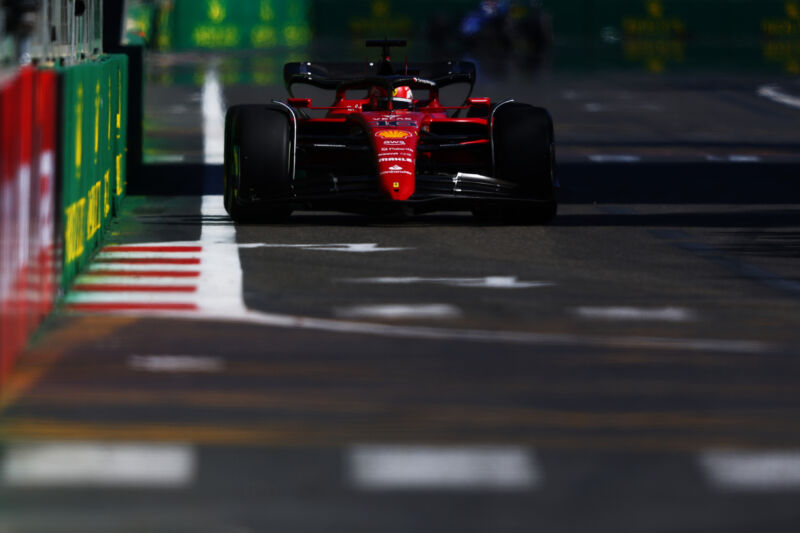
The sport of Formula 1 racing went through a massive change at the beginning of this season as it introduced new cars that harness aerodynamic ground effects to push them down onto the track. The aerodynamic approach was last used in F1 in the late 1970s and early 1980s before being banned on safety grounds.
One issue, then, that perhaps should have been anticipated this time was a condition called porpoising, where the cars oscillate vertically at a rather high frequency while traveling at high speed, violently shaking the driver in the process. As this season has progressed, the Grand Prix Drivers’ Association has become more and more vocal about the potential health risk this poses for these athletes. And on Thursday, the Federation Internationale de l’Automobile (or FIA, the sport’s governing body) announced it has a plan to do something about it.
What’s porpoising?
As the air travels underneath the body of an F1 car, it expands as it reaches the venturis at the rear of the car. The faster the car goes, the more downforce it generates via this expansion, until at a certain point the airflow detaches from the floor and stalls. This wipes out all the downforce immediately, and without that effect sucking the car to the ground, it raises up on its suspension.
The problem is that this then returns the car to a state where the airflow re-attaches, and so it gets sucked back down onto the ground, the speeds rise, and then the airflow stalls, and the car pops up again. Lather, rinse, and repeat several times a second. When it happens, the driver gets bounced up and down to the point that some are reporting back troubles.
Running the cars lower to the ground more effectively seals the floor and increases the downforce but also increases porpoising. Raising the ride height bleeds away downforce and therefore decreases cornering speeds and increases lap times.
TD039
The FIA has issued a technical directive, TD039, which gives the teams an idea of how the organization plans to deal with the problem. One way to reduce the effect will be to pay closer attention to the “legality plank”—a sheet of composite wood called Jabroc that must be a certain thickness at the end of the race to prevent cars from running too low to the ground. The FIA is also going to come up with a metric, based on vertical acceleration, for the acceptable amount of porpoising.
“The exact mathematical formula for this metric is still being analyzed by the FIA, and the Formula 1 teams have been invited to contribute to this process,” the FIA says.
German publication Auto Motor und Sport has apparently obtained a full copy of the technical directive and provides more details. It says that the oscillation limit will be determined after the three Free Practice sessions of a Grand Prix weekend. Teams will have to run three consecutive laps without using the drag reduction system to generate a baseline for porpoising, and the FIA will police teams to ensure no one runs at an uncompetitive slow pace to avoid the phenomenon.
The FIA will then determine a safe setup for each car’s ride height, spring rates, damper settings, and aero profile. These cannot be modified, except for raising the ride height even higher or making changes to tire pressures, front wing settings, or other tweaks necessary to cope with weather or cooling. And if a team can’t reach the FIA’s limit, the FIA can order them to increase ride height by a not-insignificant 10 mm.
The technical directive applies from this weekend’s Canadian Grand Prix.
https://arstechnica.com/?p=1861359

